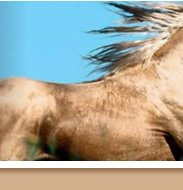![]()
![]()
![]()
![]()
![]()
![]()

![]()
![]()
![]()
![]()
![]()
ArticlesHow To Stop Your Puppy ChewingYou got your new pet almost a week ago. In that time, the little beast has eaten three pairs of shoes, four of your favorite Stephen King novels ( He left Cujo alone - Maybe he is a fan too? ), gnawed the trim around the bathroom doorway, chewed thru the power cord of your laptop and, just this morning, you found him gleefully chewing up your wallet with a side order of your credit cards. This is getting expensive really fast and starting to get dangerous for the pup also. Maybe it is time we intervened? So how do we handle this situation? Once again, we want to be sure our young charge is healthy to begin, so off to the vets office if you have not been recently. There is a medical condition that can cause chewing in pups aside from the normal tendencies they have of chewing to explore their world. This illness is called Pica and causes your pet to eat non-food items in an attempt to deal with nausea. So please visit your veterinarian and make sure your animal has a clean bill of health. The next step involves understanding that, while chewing is a normal and healthy part of any pup's development, it has acceptable and unacceptable outlets. Puppies learn about their world thru chewing much the same as human children. They use their senses to explore the new world, which lies before them and their tactile sense, and sense of taste is brought into play as they chew on various objects. Much like human children, pups also need our protection from the dangers that lurk in their explorations. Electrical cords, needles, poisonous houseplants and household chemicals, even chocolate, all pose very real threats to your pet. It is your duty to protect the animal from these dangers. Consistent training with the NO command can do this. No is a word your dog should learn early and respond to instantly. This one word has saved many dogs from many horrible fates. The pup is trained by repeatedly using the NO command every time a situation occurs. If you pet is caught chewing on your shoes, say NO in an affirmative tone and take the item from the animal. Do not let it become a game of tug-o-war. Rather, remove the item quickly or back up your NO with a spray from a water bottle, a loud clapping of the hands or a light but convincing tap on the nose. This little diversion is usually enough to make a dog lose interest in whatever they may have been chewing on. Also, do not give chase to an animal chewing on an undesirable selection of chew toy. The will interpret this action to be a game and they will be most happy to play for hours on end. Instead, calmly work your way towards the animal and then remove the object. For items that are habitually mistreated, a chemical additive such as Bitter Apple may be in order to impart a foul taste to the item and make it unpalatable for the animal to chew on. Crate Training is also effective to stop chewing behavior and we shall discuss this course at length in later articles. You do not want to completely destroy your dogs urge to chew however as this habit is healthy for them when exercised correctly. Instead, offer them suitable objects for their chewing pleasure. Perhaps a dog toy ( For quieter households, remove any squeakers from the toy. ) Rope toys and crunchy dog biscuits provide good outlets for a dog's destructive behavior and also help to keep up the oral hygiene of your pet. Also be aware that all animals are different. Your dog may react differently than another dog in a given situation. Some dogs develop aggressive stances upon attempts to remove an object from their possession. If your dog becomes aggressive and territorial, then professional assistance is highly recommended to avoid further problems or biting. With these simple suggestions, you can ensure your pups good health and the well being of your book collection. You might even find the time to spend some quality time reading Cujo again with your new best friend. Paul Duxbury writes extensively on Pet Care. You can read more of his articles at Dog Care and Training and Pet Care Centre Download Your Free Dog Training Report Horses How to Get Free Garbage Bags - The scenario: A newlywed couple moves into their new home. supply SinoNSH GER Gas Engine Oil Regenerationoil purifieroilpurificationoil filtrationoil rec - NSH GER Gas engine oil regeneration(oil purifier,oil purification,oil filtration,oil filter,oil treatment,oil recycling,oil regeneration,oil filtering, oil reclaim plant,oil recovery,waste managment,oil disposal,oil reclamation. Enjoying the Beauty of the Spring Season - The spring of the year is a favorite season for many people, and it is certainly easy to understand why this is so. sell sinonsh insulation oilrecyclingfilterpurifierfiltrationpurificationregenerationtreatme - VFD--Double-Stage High-Efficiency Vacuum Insulation Oil Purifier Application VFD series is mainly used to improve the properties of insulation oil. New York Green Building Initiative - As is occurring in many states, New York is trying to promote Green Building practices. more... |
![]()
![]()
ęCopyright 2025 Alhaja.net All rights reserved.
Unauthorized duplication in part or whole strictly prohibited by international
copyright law.
![]()



